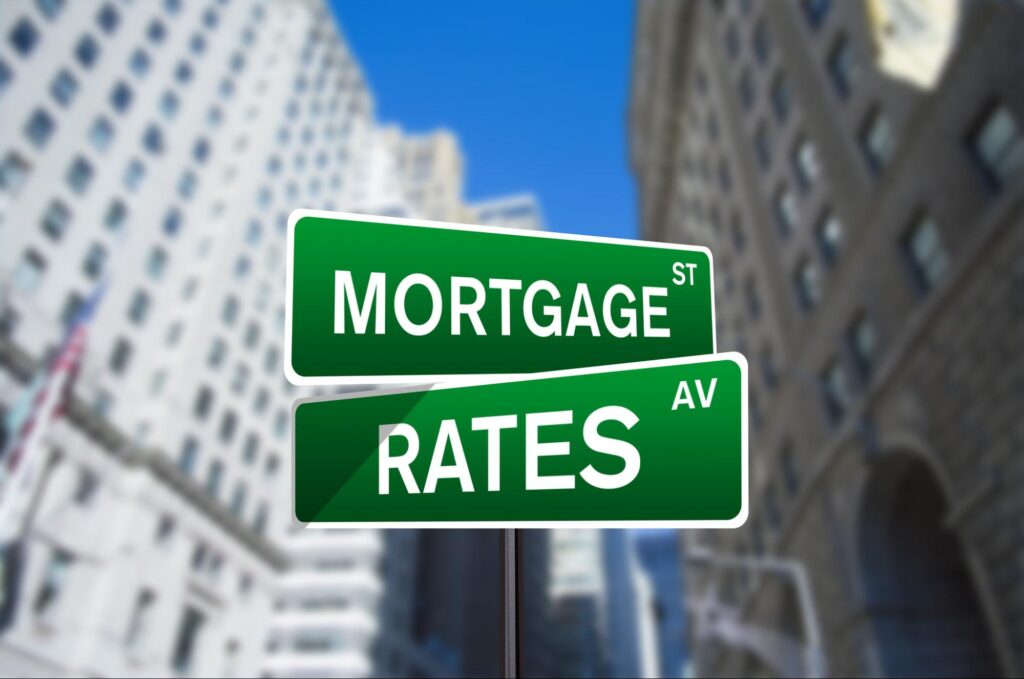Since the beginning of 2024, home buyers have suddenly become conservative about applying for a mortgage. The inflation sweeping through the country has affected the cost of construction and mortgage rates in the long run.

So, first-time home buyers and persons looking to refinance their mortgages opted to stand back and wait out the storm.
The Federal Reserve to the Rescue
Applying for a mortgage when rates were high would have been a severe financial hassle. However, the Federal Reserve’s efforts and policies to regulate rates are yielding results.

With recent reports of a slight drop in mortgage rates, the confidence of homebuyers’ is restored, marked by an increase in the number of home loan applications.
An Amplified Result
Despite the slight drop in mortgage rates, the Mortgage Bankers Association (MBA) reported a significant increase in housing market activity.

There are speculations that real estate deals would increase in volume after the last tranche of policy interventions by the US Federal Reserve. The speculation is that the rates are bound to dip a bit more.
Mortgage Recovering From Socioeconomic Battering
In the first week of March, the 30-year fixed mortgage rate edged slightly down to 7.02 percent. This was after a monumental fluctuation during the last months of 2023 and the turn of the new year.

During this period, the rates initially dipped to the mid-6 percent before jumping back to a record high of 8 percent.
The MBA Providing Some Helpful Cues
However, besides the recent rebound in the volume of mortgage loan applications, the MBA also reported a similar uptick in refinancing activities. In that first week of March, the MBA reported an 8 percent increase in the Refinance Index.

According to lenders, data on the economic implications of raging inflation shows that the Federal Reserve’s monetary policies are having the desired effects.
What are the Effects of the Fed’s Monetary Policies?
The economic data indicates that home prices are already down relative to the high cost during the pandemic.

The Fed’s policies drove up the rates on home loans, and in response, home prices crashed. Now that the goal of regulating home prices has been achieved, the Federal Reserve is almost inevitable to cut mortgage rates in a bid to counter-regulate.
Moving Forward With a Positive Outlook
To take advantage of the Q1 improvements in home prices, cuts in mortgage rates may come later in 2024. So, brokers and analysts project that such moves would stoke up activities in the real estate market.

These changes would make buying a new home more affordable for the average homebuyer and naturally increase the standard of living.
Mortgage Rates Affect GDP
According to Fannie Mae, the prospects are looking good, as the drop in the 30-year fixed rate may extend well into 2025. Though the finance company equally predicts a slight decline in GDP in 2024, they are confident that it will eventually grow in the coming year.

So that home buyers can put their financial plans in order and enjoy good bargains on real estate deals in the coming months.
Hearing From Real Estate Experts
Different real estate stakeholders are reiterating the potential transition of the lights from yellow to green.

For example, according to Mike Fratanoni, MBA’s chief economist, “The latest data on inflation was not markedly better nor worse than expected, which was enough to bring mortgage rates down a bit.” So, buyers’ confidence is expected to be restored alongside the improving rates.
First-time Home Buyers Are Eager to Plunge In
Likewise, MBA President Bob Broeksmit feels that first-time home buyers’ interest has peaked again. This is despite the small number of listed homes relative to willing buyers.

In a recent statement, he said, “A small decline in mortgage rates last week led to a nearly 10 percent jump in mortgage applications, with refinance and purchase activity both posting solid gains.”
Significant Turnaround in March
According to the Federal Home Loan Mortgage Corporation (Freddie Mac), their tracker saw mortgage rates drop to 6.88 percent on March 7. This figure is a significant departure from the 6.94 percent of the previous week.

So, after this drop in rate, Freddie Mac started recording an increase in the number of home loan applications.
Mortgage Rate Influences Home Purchase Decisions
Many factors influence homebuyers’ ability and willingness to initiate a home purchase. One of the most influential is the mortgage rate.

Judging by the notable effect of the slight change in the mortgage rate in the first week of March, stakeholders are confident that market trends will normalize once the mortgage rates become steady.
Mortgage Rate Wields the Wand of Home Sales
According to Sam Khater, the chief economist at Freddie Mac, “Evidence that purchase demand remains sensitive to interest rate changes was on display this week, as applications rose for the first time in six weeks in response to lower rates.”

While the rates may not be challenging for home refinancers, Khater said it “continue(s) to be one of the biggest hurdles for potential homebuyers looking to enter the market.”
Cheap Houses and Costly Loans
Despite what homebuyers see as unfavorable mortgage rates in the past few months, housing economists suggest that home prices are at a great bargain relative to a year ago.

To give particulars, 21 percent of all listed homes had prices ranging from $200,000 to $350,000 in February 2024. Realtor.com says these prices are much better than the listings from last year.
Some Buyers Will Wait for a Clear Sky
However, despite the juicy real estate prices, some prospective home buyers may still have to think things over before making a purchase. This is because the cost of financing a home purchase with loans may be quite discouraging.

According to Jiayi Xu, an economist at realtor.com, “While more affordable options are encouraging, the current high mortgage rate environment makes it less affordable than it could be.”

